Steel the Show: How Gehry Reinvented the Art of Metal Cladding
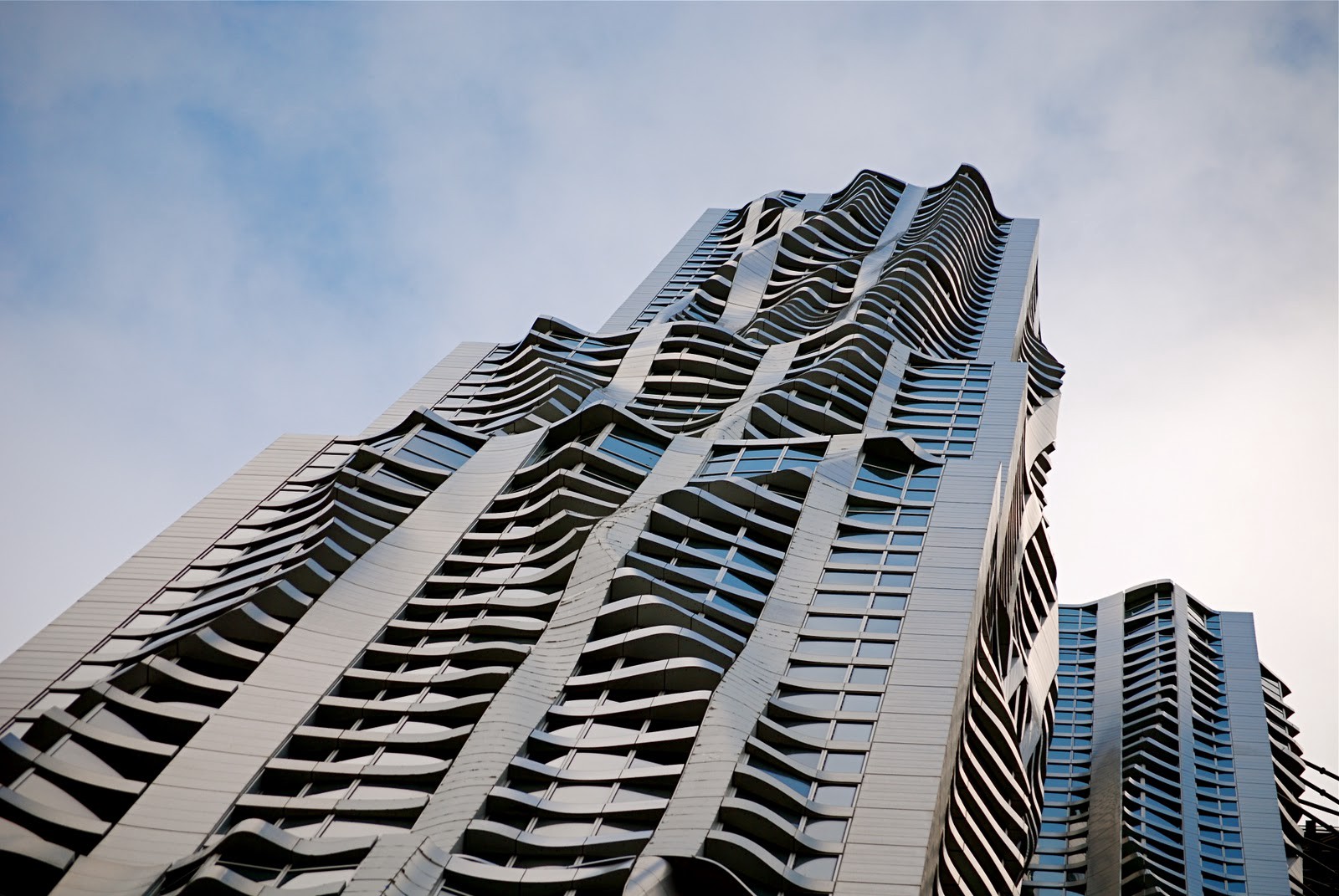
Find the perfect steel products for your next project through Architizer’s new community marketplace for building-products. Manufacturers: Check out the latest construction leads and sign up now.
From rippling façades to delicate gestures crafted in metal and glass, Frank Gehry’s buildings have become some of the world’s most recognizable to the architecture community and beyond. The 1989 Pritzker Prize winner’s work has inspired generations of new designers and transformed how we understand the discipline. Known for experimentation, fluidity and an emphasis on the art of architecture, Gehry’s work has expanded an otherwise rigid and rectilinear practice of architecture.
The architect’s ideologies of what the built environment can offer are manifested in a bold exploration of material limitations and the free-flowing form of his designs. In particular, his unique manipulation of stainless steel for building skins has rekindled the conversation on the functional role of architecture. While Gehry has become a household name for designing the following projects, these eye-catching structures were only made possible through a close collaboration with specialist manufacturers and fabricators. As you considering the possibilities of steel cladding for your next project, be inspired by these undulating elevations and the companies that helped make them a reality:

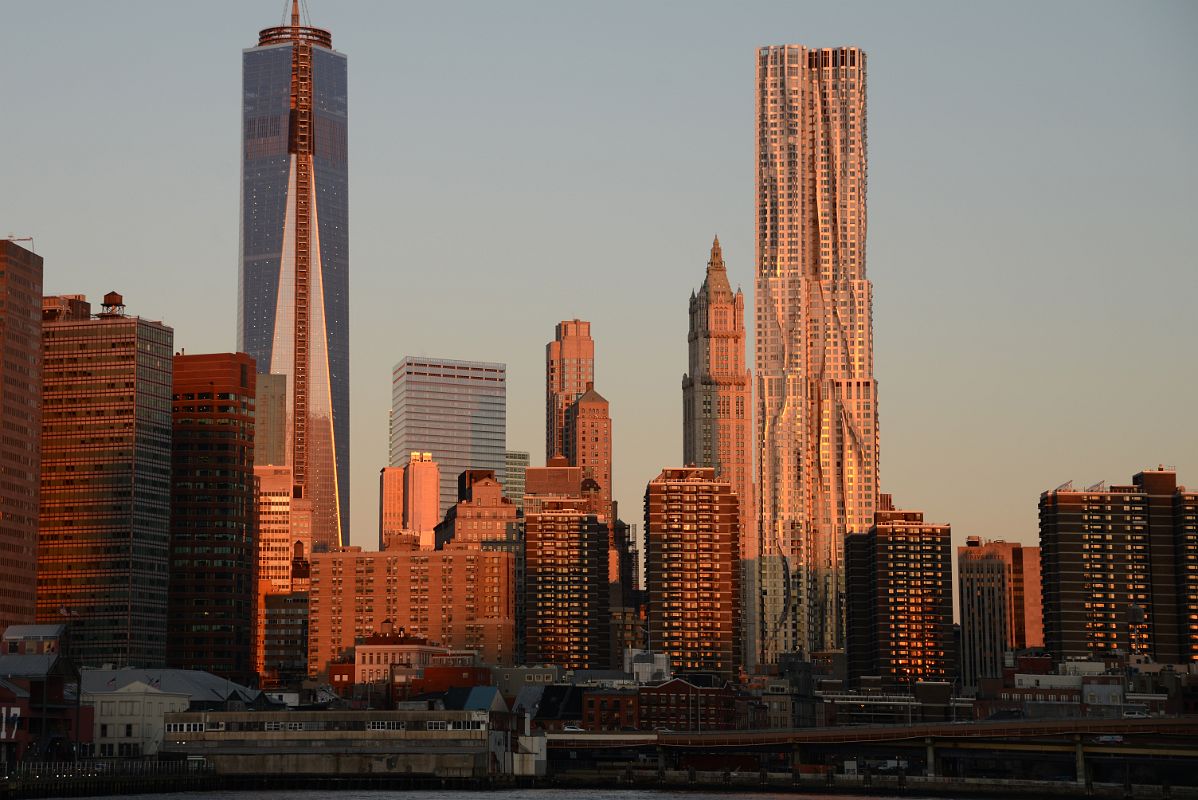 Eight Spruce Street (New York) New York, NY, United States
Eight Spruce Street (New York) New York, NY, United States
Steel by Permasteelisa Group
Eight Spruce Street in lower Manhattan became the tallest residential building in New York City on completion. In 2011 it won CTBUH’s award for Best Tall Building in the Americas for its functionality, program and design. The building’s rippling metal façade sets it apart along the skyline, hinting at a new era for façade design in the high-rise typology.
The building skin was created using 427,000 square feet of stainless steel and glass. The flowing stainless steel is broken into panels that are positioned over a unitized curtain wall system. Gehry worked closely with Permasteelisa Group to create this complex metal system. The innovative company is a worldwide leading contractor in engineering, project management, manufacturing and installation of architectural envelopes. For Eight Spruce Street, a design feedback loop was created between Gehry Partners and Permasteelisa to connect the design with the realities of construction.
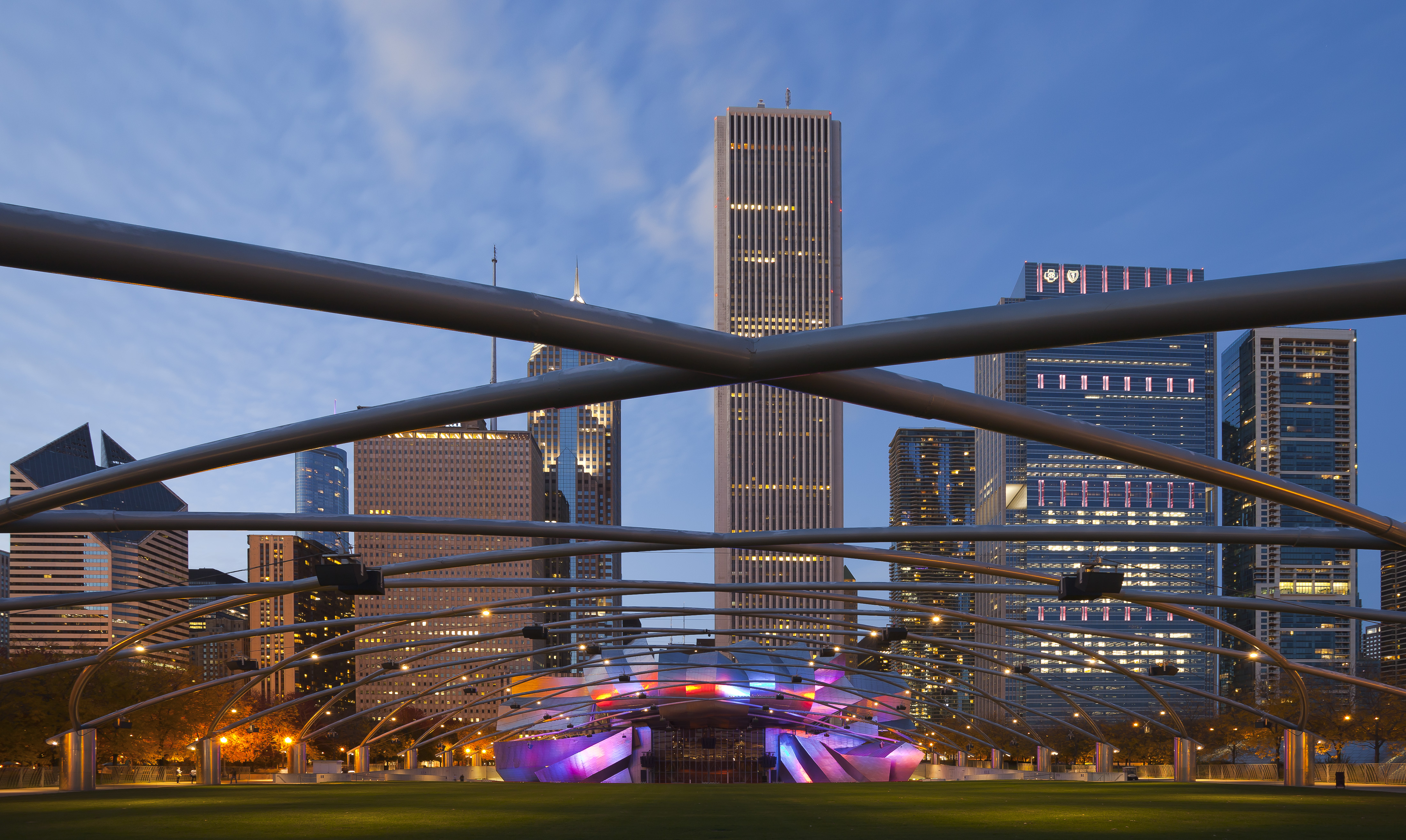
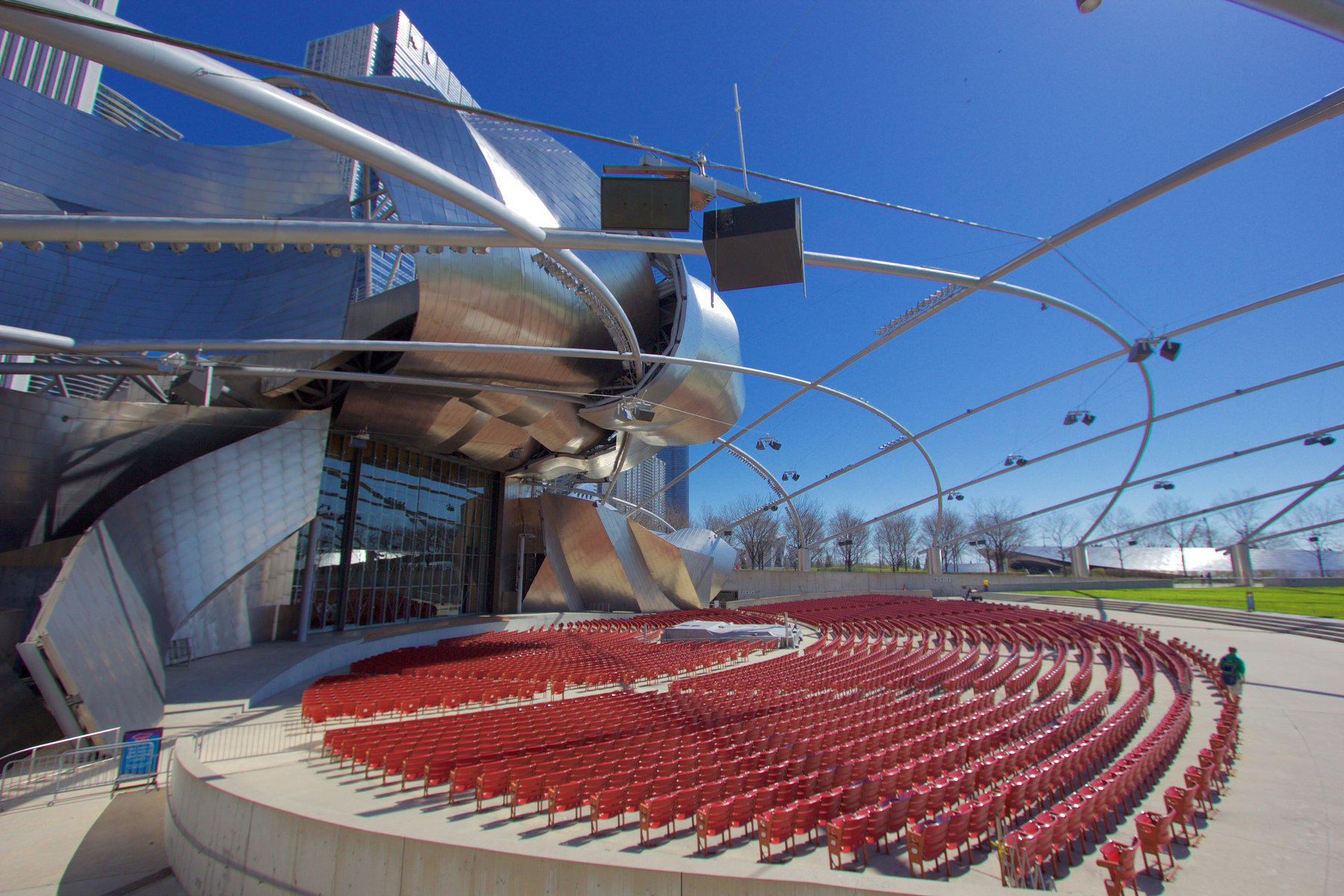 Pritzker Pavilion, Chicago, IL, United States
Pritzker Pavilion, Chicago, IL, United States
Steel by Zahner
This 100-foot-wide proscenium is sited on the north end of Millenium Park in Chicago. The visually stunning curved steel elements seem to unfurl from a central core and work to form the roof planes of the pavilion. The steel shapes play a functional role for the performance stage, while at the same time bringing the idea of decoration back into the architectural conversation.
The steel canopy was manufactured by Zahner. The metallic curves consist of fourteen distinct pieces that make use an innovative two-part steel structure. The 2’ x 4’ 22ga “Angel Hair” finish high performance stainless steel skins clad the secondary structure. The stainless steel contains molybdenum which offers optimal corrosion resistance for the metal.
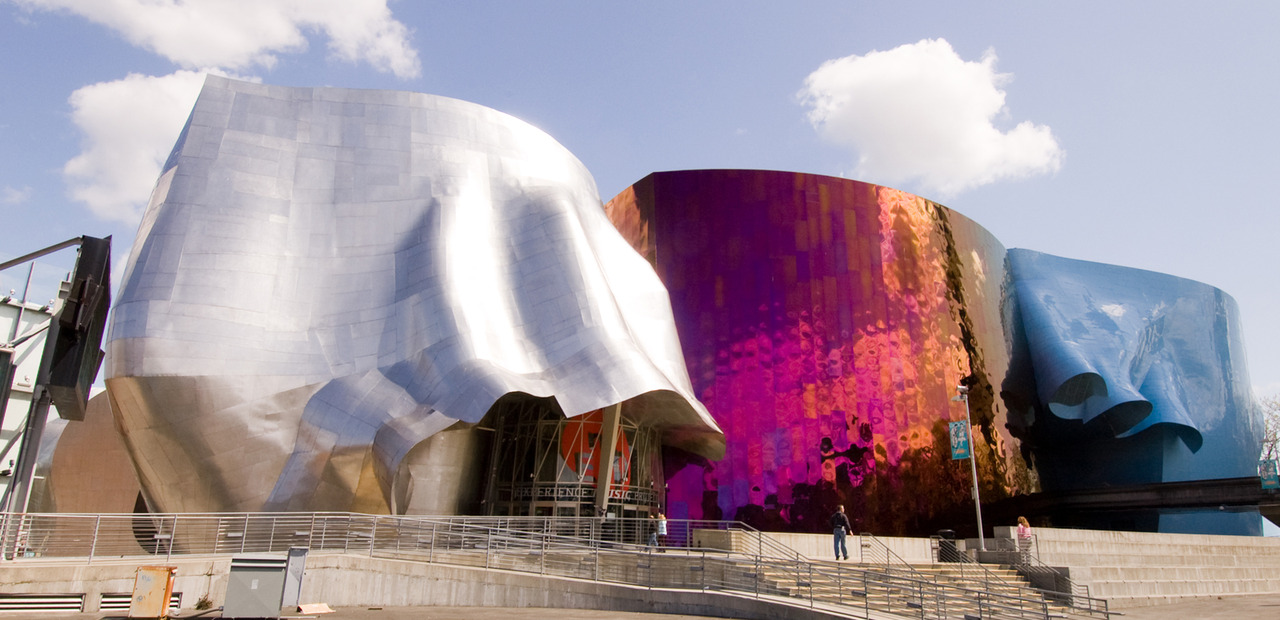
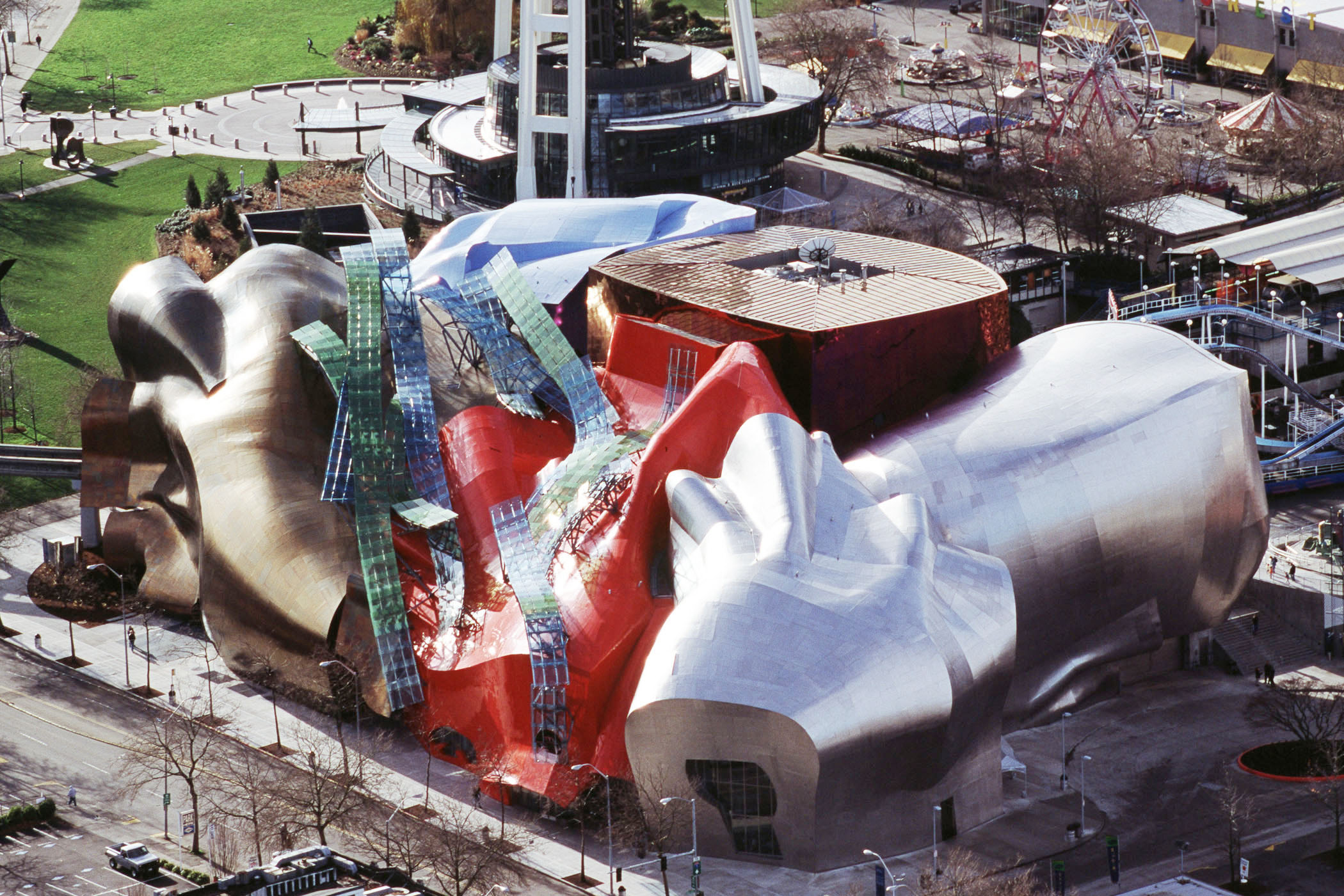 Museum of Pop Culture, Seattle, WA, United States
Museum of Pop Culture, Seattle, WA, United States
Steel by Zahner
A colorful, sculptural museum, the MoPOP building was completed in 2000 and marks the edge of Seattle’s City Center. Residing within the shadow of the Seattle Space Needle, the curvilinear forms of this landmark structure breaks away from ideals of symmetry and purity of form to explore movement and free flowing organic form.
The museum’s skin was realized and produced by Zahner. Gehry’s unique curves for the building make it one of the first projects to use the Zahner Engineered Profiled Panel System (ZEPPS), a patented technology for producing complex curvilinear structures. The building is made up of 3,300 unique structural assemblies clad with stainless steel sheets. The Zahner team worked closely with Gehry to produce prefabricated “Angel Hair” finish stainless steel sheets that could be easily transported to the site and assembled quickly.
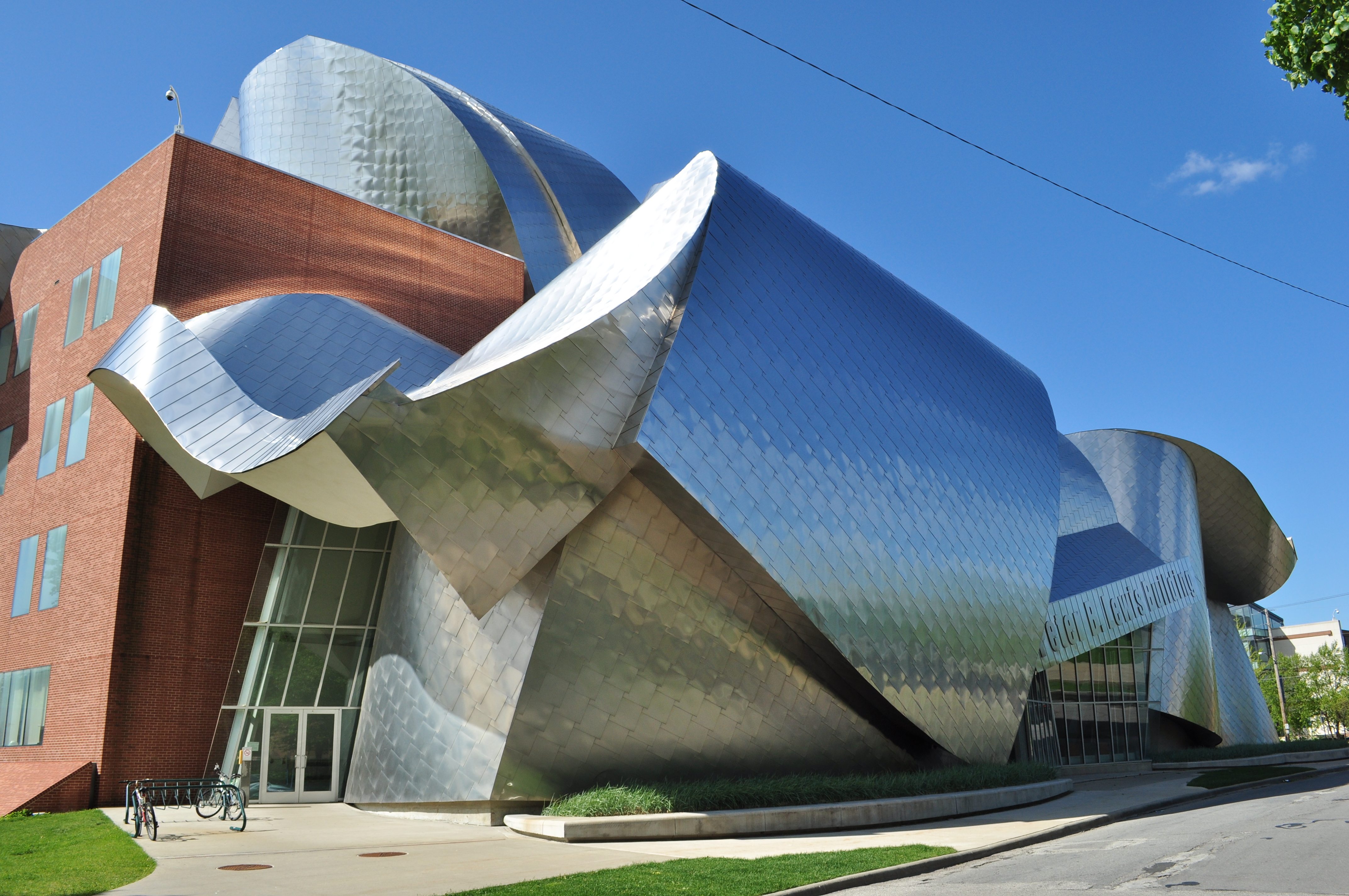
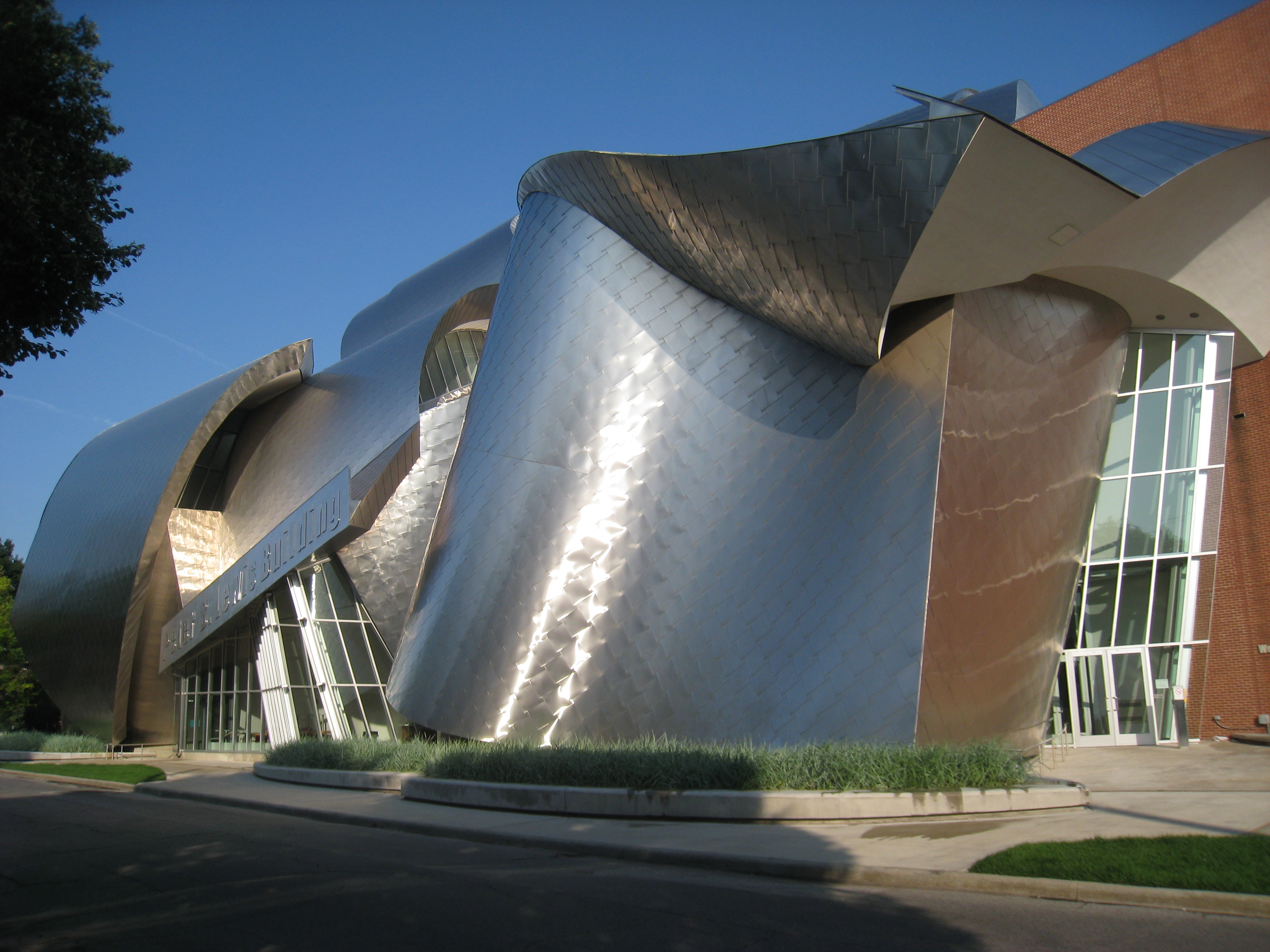 Peter B. Lewis Building, Cleveland, OH, United States
Peter B. Lewis Building, Cleveland, OH, United States
Steel by Zahner
The shimmery, asymmetrical and decentralized addition to a business school, the Peter B. Lewis Building forms a narrative between old and new. The iconic curves and twisting metal planes of the architecture challenges the revivalist architecture of the main campus. Like the facade, the buildings interior rethinks connections and distribution of space.
Gehry choose Zahner for the company’s commitment to a holistic approach to the engineering and fabrication of metal systems. The building’s facade is constructed using 22 ga stainless steel finished in #4 satin to create its reflective sheen. The School Building’s scale-like skin uses Zahner’s proprietary flat seam system to create an easy-to-assemble interlocking pattern.
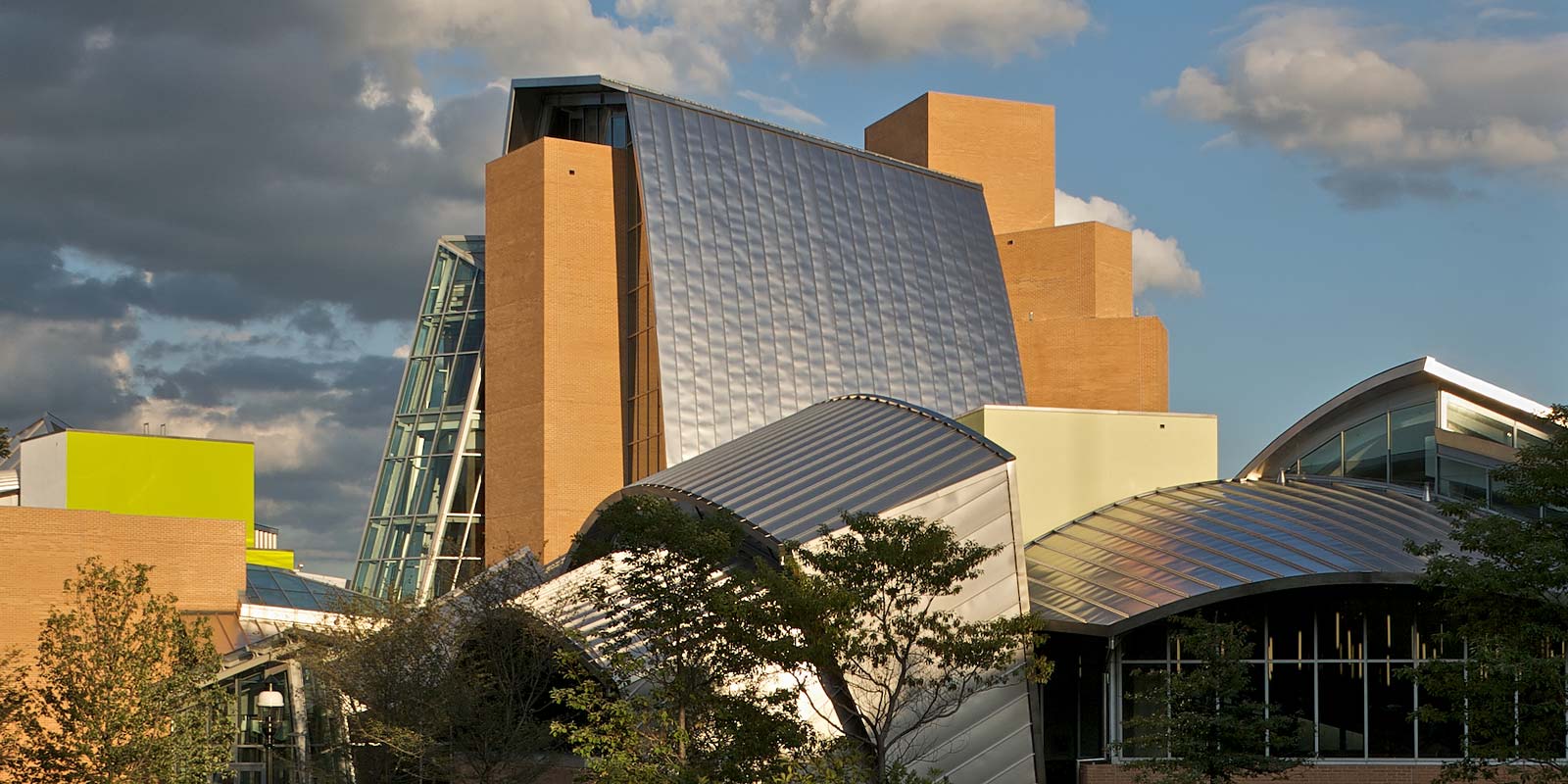
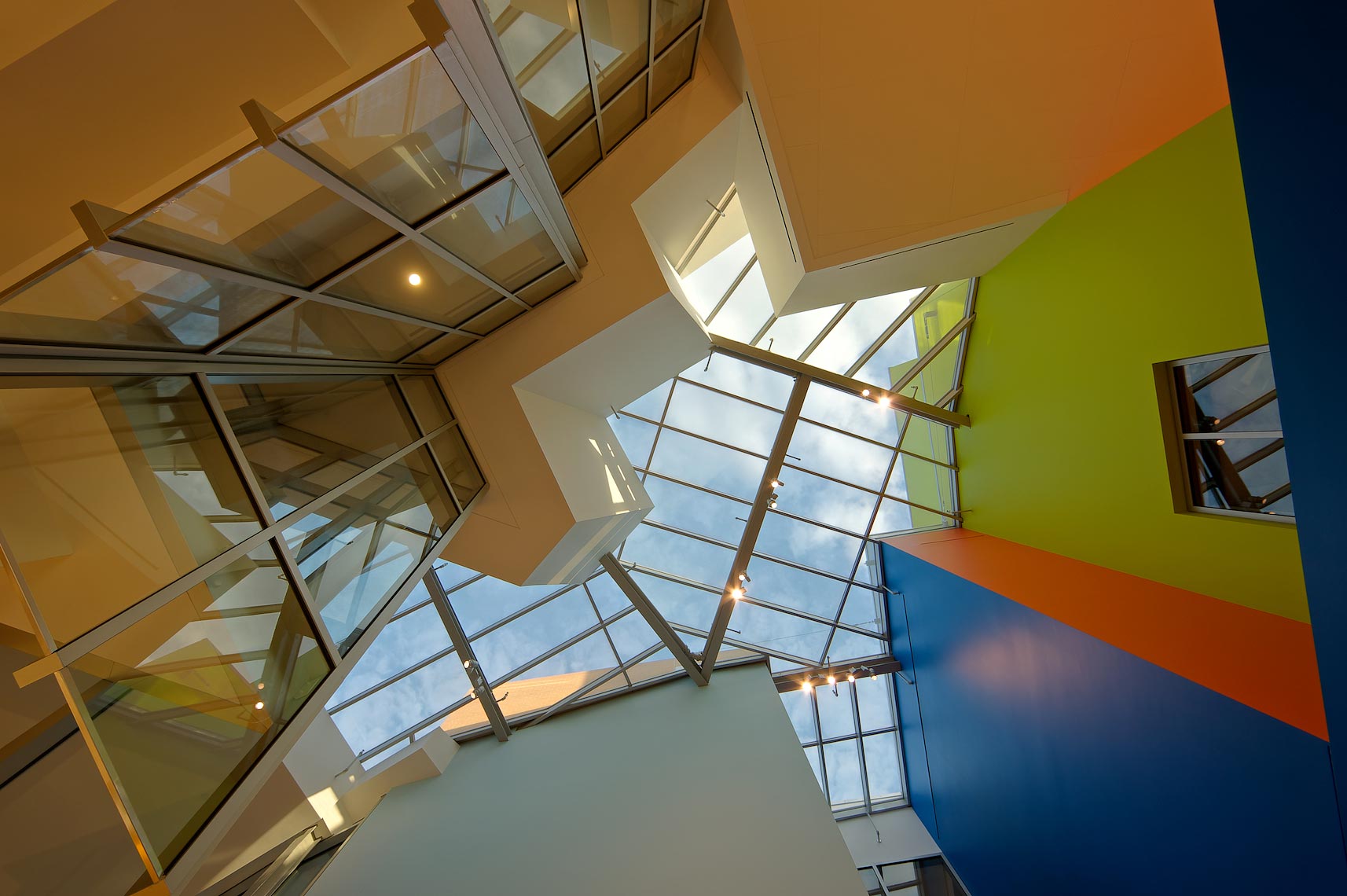 Lewis Library, Princeton, NJ, United States
Lewis Library, Princeton, NJ, United States
Steel by Outokompu
Located on the corner of Washington Road and Ivy Lane on the south end of Princeton University’s campus, this 87,000 square foot metal, glass and clay library brings together multiple programs. From technology spaces and research rooms to study spaces and classrooms, the building’s program is housed under stepping curved roof planes.
The abstract form of the architecture was used as a means to inspire and stimulate the imagination of scholars of higher education. The building uses 88,000 pounds of embossed stainless steel panels from the Swedish company Outokompu. The steel was brought in coils and formed into panels by local sheet metal fabricators. The repetition and single curve properties of the design allowed the metal to be easily pieced together on site.
Search for the best steel products through Architizer’s new community marketplace for building-products. Click here to sign up now. Are you a steel manufacturer looking to connect with architects? Click here.
The post Steel the Show: How Gehry Reinvented the Art of Metal Cladding appeared first on Journal.
, Eric Baldwin, read more Journal http://bit.ly/2GeNjiN
Yorumlar
Yorum Gönder